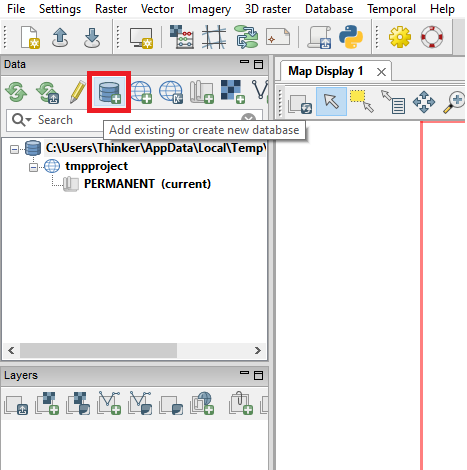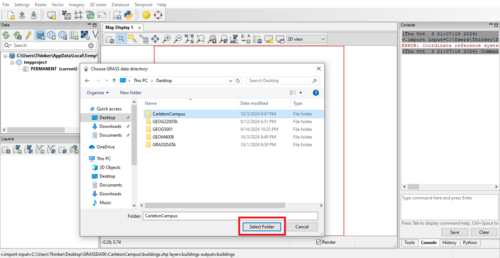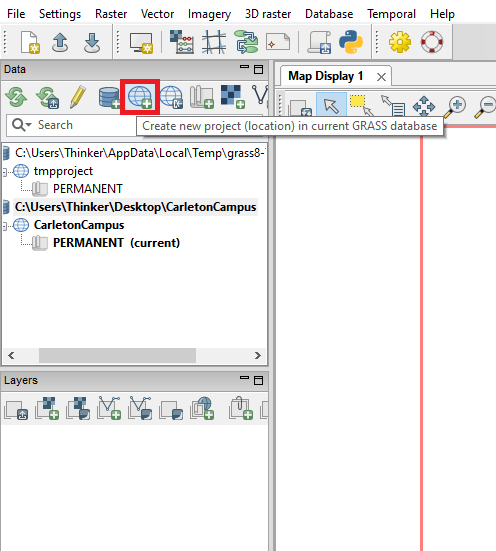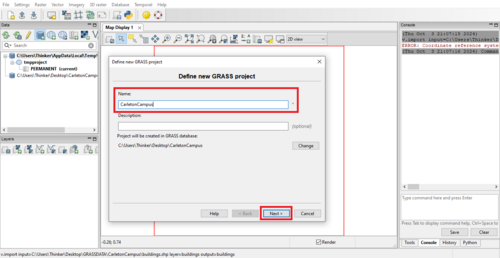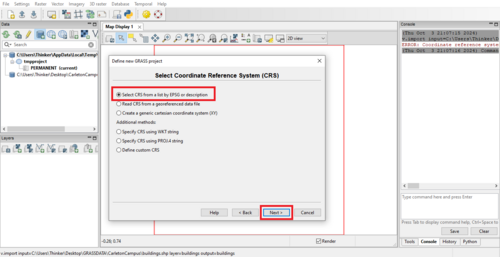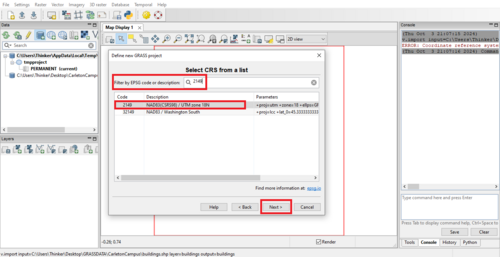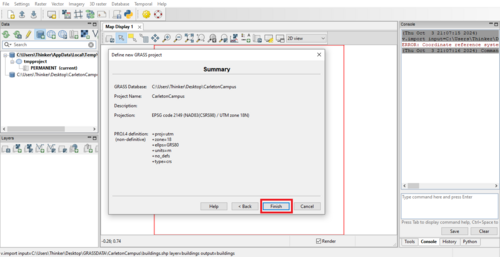Mapping The Carleton University Campus With “Grass GIS”
Contents
Introduction
Welcome to this tutorial on mapping the Carleton University campus with “GRASS GIS”, a powerful computational engine for raster, vector, and geospatial processing[1]. In this guide, we will explore how to leverage GRASS GIS to create a thematic map highlighting some features of the Carleton campus environment. Whether you’re a student, researcher, or simply interested in geographic analysis, this tutorial will provide step-by-step instructions to help you visualize a map. By the end, you’ll have the skills to create your maps and understand how you can manipulate layers to make descent maps on GRASS GIS. Let’s get started!
What Is GRASS GIS?
Geographic Resources Analysis Support System, commonly called GRASS GIS, is a geographic information system (GIS) software suite used for geospatial data management and analysis, image processing, producing graphics and maps, spatial modelling, and visualizing. GRASS GIS is licensed and released as free and open-source software under the GNU General Public License (GPL). It runs on multiple operating systems, including Linux, Mac and Windows. Users can interface with the software features through a graphical user interface (GUI) or by plugging into GRASS via other software such as QGIS[2].
Downloading GRASS GIS
To get started with GRASS GIS, you can easily download and install it from the official GRASS GIS website. Navigate to https://grass.osgeo.org/ and select the “Download” section. Here, you’ll find installation packages for various operating systems, including Windows, macOS, and Linux. For Windows users, the OSGeo4W installer is recommended, while macOS users can download a pre-built package. Linux users can often find GRASS GIS in their distribution’s package manager. Follow the installation instructions provided for your operating system, and once installed, you can launch GRASS GIS to begin exploring its powerful features. Here, in this tutorial, the latest version “GRASS GIS 8.4” is used.
Downloading Data
You can access the required data in two simple ways: The first is the MacOdrum Library (you may need a Carleton 360 account to access some layers). Go to https://library.carleton.ca/find/gis/base-layers and find the necessary data you need. The second is to obtain the layer package from OpenStreetMap Data Extracts (Geofabrik downloads). Go to https://download.geofabrik.de/ and choose your region to have the full package data of wherever you want (Be careful about data accuracy and precision in some cases!).
Running GRASS GIS
If you are running GRASS GIS for the first time, you will open a default project "world_latlog_wgs84" where you can find a map layer called "country_boundaries" showing a world map in the WGS84 coordinate system[3]. The main component of the Data tab is the Data Catalog which shows the GRASS GIS hierarchical structure consisting of database, project, and mapset[4]. For more info about data hierarchy, see https://grass.osgeo.org/grass84/manuals/grass_database.html
Fig 1. Default project world_latlog_wgs84 Source: https://grass.osgeo.org/grass84/manuals/helptext.html
Primary Settings
Create a New Database
If you want to do the project in the desired direction, you must first create a new database. Otherwise, you can proceed in the default path where you installed Grass GIS. To create a new one, click on ![]() icon in the data panel.
icon in the data panel.
Fig 2. Create new database icon
Fig 3. Define a path for database When you create a database for the first time, it is necessary to define projecting setting. Click on Yes, and follow the next steps.
Fig 4. Asking about if you want to create a new project
Note: If you mistakenly click on No, you can define projection by clicking on ![]() icon in the data panel.
icon in the data panel.
Fig 5. Creating new project
Projection Setting
To work with your own data, you should start by creating a new project with a Coordinate Reference System (CRS) that is appropriate for your study area or matches the CRS of your data. To know more about CRS, see https://en.wikipedia.org/wiki/Spatial_reference_system
Fig 6. Defining new project
Fig 7. Selecting CRS
When you see the list, there are a lot of CRS that you can choose from according to your data location. You can also find in the list by their EPSG codes. See https://epsg.io/ In this case, Carleton University CRS is NAD83(CSRS98) / UTM zone 18N. You can also find it by writing 2149 (ESPG code) in the search box.
Fig 8. Selecting Carleton CRS
The last step before pressing the Finish button is to check the provided summary. If everything is ok, you can press Finish and go for the next steps.
Fig 9. Summary overview
Resources
https://library.carleton.ca/find/gis/base-layers
